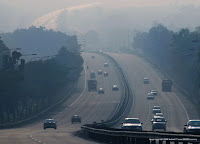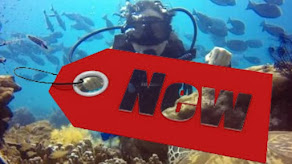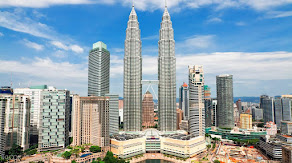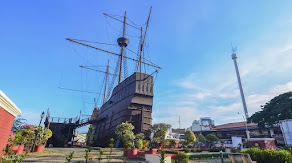Public Hospital
Private Hospital
Health
Some tropical illnesses are prevalent in Malaysia and travellers should seek medical advice regarding any recommended vaccinations before travelling. Hepatitis A and B are common, as is dengue fever, which has no vaccination or immunisation. There has been an increase in cases of dengue fever since January 2005. Malaria risks are isolated to the inland regions; the exception is Sabah, where there is an all-year risk. Visitors should stick to bottled water and avoid uncooked meat, fish and vegetables, unpeeled fruit, ice and salads. A further health hazard in Malaysia is smoke haze and air pollution, particularly in Kuala Lumpur, which has the worst air quality in Asia with very high Benzene pollution levels. This could aggravate cardiac or respiratory problems. The hospitals in Kuala Lumpur and other cities are of a high standard. Medical insurance is recommended. Travellers older than one year coming from infected areas require a yellow fever vaccination certificate.
Malaria
General considerations:
Malaria is a common and life-threatening disease in many tropical and subtropical areas. It is currently endemic in over 100 countries, which are visited by more than 125 million nternational travellers every year. Each year many international travellers fall ill with malaria while visiting countries where the disease is endemic, and well over 10,000 fall ill after returning home. Fever occurring in a traveller within three months of leaving a malaria-endemic area is a medical mergency and should be investigated urgently.
Cause:
Human malaria is caused by four different species of the protozoan parasite Plasmodium: Plasmodium falciparum, P. vivax, P. ovale and P. malariae.
Transmission:
The malaria parasite is transmitted by various species of Anopheles mosquitoes, which bite mainly between sunset and sunrise.
Nature of the disease:
Malaria is an acute febrile illness with an incubation period of 7 days or longer. Thus, a febrile illness developing less than one week after the first possible exposure is not malaria. The most severe form is caused by P. falciparum, in which variable clinical features include fever, chills, headache, muscular aching and weakness, vomiting, cough, diarrhoea and abdominal pain; other symptoms related to organ failure may supervene, such as: acute renal failure, generalized convulsions, circulatory collapse, followed by coma and death. It is estimated that about 1% of patients with P. falciparum infection die of the disease. The initial symptoms, which may be mild, may not be easy to recognize as being due to malaria. It is important that the possibility of falciparum malaria is considered in all cases of unexplained fever starting at any time between the seventh day of first possible exposure to malaria and three months (or, rarely, later) after the last possible exposure, and any individual who experiences a fever in this interval should immediately seek diagnosis and effective treatment. Early diagnosis and appropriate treatment can be life-saving. Falciparum malaria may be fatal if treatment is delayed beyond 24 hours. A blood sample should be examined for malaria parasites. If no parasites are found in the first blood film but symptoms persist, a series of blood samples should be taken and examined at 6-12-hour intervals. Pregnant women, young children and elderly travellers are particularly at risk. Malaria in pregnant travellers increases the risk of maternal death, miscarriage, stillbirth and neonatal death. The forms of malaria caused by other Plasmodium species are less severe and rarely life-threatening. Prevention and treatment of falciparum malaria are becoming more difficult because P. falciparum is increasingly resistant to various antimalarial drugs. Of the other malaria species, drug resistance has to date been reported for P. vivax, mainly from Indonesia (Irian Jaya) and Papua New Guinea, with more sporadic cases reported from Guyana. P. vivax with declining sensitivity has been reported for Brazil, Colombia, Guatemala, India, Myanmar, the Republic of Korea, and Thailand. P. malariae resistant to chloroquine has been reported from Indonesia.
Geographical distribution:
The risk for travellers of contracting malaria is highly variable from country to country and even between areas in a country. In many endemic countries of Latin America and the Caribbean, Asia and the Mediterranean region, the main urban areas, but not necessarily the outskirts of towns, are free of malaria transmission. However, malaria can occur in main urban areas in Africa and India. There is usually less risk of the disease at altitudes above 1,500 metres, but in favourable climatic conditions it can occur at altitudes up to almost 3,000 metres. The risk of infection may also vary according to the season, being highest at the end of the rainy season. There is no risk of malaria in many tourist destinations in South-East Asia, Latin America and the Caribbean.
Hepatitis B
Cause:
Hepatitis B virus (HBV), belonging to the Hepadnaviridae.
Transmission:
Hepatitis B is transmitted from person to person by contact with infected body fluids. Sexual contact is an important mode of transmission, but infection is also transmitted by transfusion of contaminated blood or blood products, or by use of contaminated needles or syringes for injections. There is also a potential risk of Hepatitis B transmission through other skin-penetrating procedures including acupuncture, piercing and tattooing. Perinatal transmission may occur from mother to baby. There is no insect vector or animal reservoir.
Nature of the disease:
Many HBV infections are asymptomatic (e.g. causes no symptoms) or cause mild symptoms, which are often unrecognised in adults. When clinical hepatitis results from infection, it has a gradual onset, with anorexia, abdominal discomfort, nausea, vomiting, arthralgia and rash, followed by the development of jaundice in some cases. In adults, about 1% of cases are fatal. Chronic HBV infection persists in a proportion of adults, some of whom later develop cirrhosis and/or liver cancer.
Geographical distribution:
Worldwide, but with differing levels of endemicity. In north America, Australia, northern and western Europe and New Zealand, prevalence of chronic HBV infection is relatively low (less than 2% of the general population)
Risk for travellers:
Negligible for those vaccinated against hepatitis B. Unvaccinated travellers are at risk if they have unprotected sex or use contaminated needles or syringes for injection, acupuncture, piercing or tattooing. An accident or medical emergency requiring blood transfusion may result in infection if the blood has not been screened for HBV. Travellers engaged in humanitarian relief activities may be exposed to infected blood or other body fluids in health care settings.
Prophylaxis (protective treatment):
Vaccination.
Precautions:
Adopt safe sexual practices and avoid the use of any potentially contaminated instruments for injection or other skin-piercing activity. Source: WHO.
Yellow fever
Cause:
The yellow fever virus, an arbovirus of the Flavivirus genus.
Transmission:
Yellow fever in urban and some rural areas is transmitted by the bite of infective Aedes aegypti mosquitoes and by other mosquitoes in the forests of south America. The mosquitoes bite during daylight hours. Transmission occurs at altitudes up to 2,500 metres. Yellow fever virus infects humans and monkeys. In jungle and forest areas, monkeys are the main reservoir of infection, with transmission from monkey to monkey carried out by mosquitoes. The infective mosquitoes may bite humans who enter the forest area, usually causing sporadic cases or small outbreaks. In urban areas, monkeys are not involved and infection is transmitted among humans by mosquitoes. Introduction of infection into densely populated urban areas can lead to large epidemics of yellow fever. In Africa, an intermediate pattern of transmission is common in humid savannah regions. Mosquitoes infect both monkeys and humans, causing localized outbreaks.
Nature of the disease:
Although some infections are asymptomatic, most lead to an acute illness characterized by two phases. Initially, there is fever, muscular pain, headache, chills, anorexia, nausea and/or vomiting, often with bradycardia. About 15% of patients progress to a second phase after a few days, with resurgence of fever, development of jaundice, abdominal pain, vomiting and haemorrhagic manifestations; half of these patients die 10-14 days after onset of illness.
Geographical distribution:
The yellow fever virus is endemic in some tropical areas of Africa and central and south America. The number of epidemics has increased since the early 1980s. Other countries are considered to be at risk of introduction of yellow fever due to the presence of the vector and suitable primate hosts (including Asia, where yellow fever has never been reported).
Risk for travellers:
Travellers are at risk in all areas where yellow fever is endemic. The risk is greatest for visitors who enter forest and jungle areas.
Prophylaxis (protective treatment):
Vaccination. In some countries, yellow fever vaccination is mandatory for visitors.
Precautions:
Avoid mosquito bites during the day as well as at night.
Endemic Countries:
The World Health Organization considers the following countries to be endemic for yellow fever: Angola, Benin, Bolivia, Brazil, Burkino Faso, Burundi, Cameroon, Central African Republic, Chad, Colombia, Congo, Congo, Côte d'Ivoire, Democratic Republic of the Congo, Ecuador, Equatorial Guinea, Ethiopia, French Guyana, Gabon, Gambia, Ghana, Guinea, Guinea-Bissau, Guyana, Kenya, Liberia, Mali, Niger, Nigeria, Panama, Peru, Rwanda, Sao Tome and Principe, Senegal, Sierra Leone, Somalia, Sudan, Suriname, Togo, Trinidad and Tobago, Uganda, United Republic of Tanzania and Venezuela. Source: WHO.
Hepatitis A
Cause:
Hepatitis A virus, a member of the picornavirus family.
Transmission:
The virus is acquired directly from infected persons by the faecal-oral route or by close contact, or by consumption of contaminated food or drinking water. There is no insect vector or animal reservoir (although some non-human primates are sometimes infected).
Nature of the disease:
An acute viral hepatitis with abrupt onset of fever, malaise, nausea and abdominal discomfort, followed by the development of jaundice a few days later. Infection in very young children is usually mild or asymptomatic (e.g. causes no symptoms); older children are at risk of symptomatic disease. The disease is more severe in adults, with illness lasting several weeks and recovery taking several months; case-fatality is greater than 2% for those over 40 years of age and 4% for those over 60.
Geographical distribution:
Worldwide, but most common where sanitary conditions are poor and the safety of drinking water is not well controlled.
Risk for travellers:
Non-immune travellers to developing countries are at significant risk of infection. The risk is particularly high for travellers exposed to poor conditions of hygiene, sanitation and drinking water control.
Prophylaxis (protective treatment):
Vaccination.
Precautions:
Travellers who are non-immune to hepatitis A (i.e. have never had the disease and have not been vaccinated) should take particular care to avoid potentially contaminated food and water.
Dengue Fever
Cause:
The dengue virus - a flavivirus of which there are four serotypes.
Transmission:
Dengue fever is transmitted by the Aedes aegypti mosquito, which bites during daylight hours. There is no direct person-to-person transmission. Monkeys act as a reservoir host in south-east Asia and west Africa.
Nature of the disease:
Dengue occurs in three main clinical forms: Dengue fever is an acute febrile illness with sudden onset of fever, followed by development of generalized symptoms and sometimes a macular skin rash. It is known as "breakbone fever" because of severe muscular pains. The fever may be biphasic (i.e. two separate episodes or waves of fever). Most patients recover after a few days; Dengue haemorrhagic fever has an acute onset of fever followed by other symptoms resulting from thrombocytopenia, increased vascular permeability and haemorrhagic manifestations; Dengue shock syndrome supervenes in a small proportion of cases. Severe hypotension develops, requiring urgent medical treatment to correct hypovolaemia. Without appropriate treatment, 40-50% of cases are fatal; with timely therapy, the mortality rate is 1% or less.
Geographical distribution:
Dengue fever is widespread in tropical and subtropical regions of central and south America and south and south-east Asia and also occurs in Africa; in these regions, dengue is limited to altitudes below 600 metres (2,000 feet).
Risk for travellers:
There is a significant risk for travellers in areas where dengue fever is endemic and in areas affected by epidemics of dengue.
Prophylaxis (protective treatment):
None.
Precautions:
Travellers should take precautions to avoid mosquito bites both during the day and at night in areas where dengue occurs.
 Driving is an interesting mode of seeing the country. An overland journey to Malaysia Thailand and Singapore be made easily driving through the North-South Expressway on the West coast and East-West highway to the East Coast. Car rental services are easily available. Buses, taxis and coaches, both interstate and local ply between various destinations. To drive on Malaysian road, you require a Malaysian Competent Driviong Licence, Probationary Driving Licence or an International driving Licence. To use a foreign licence, get it endorsed by the Road Transport Department. All vehicles move on the left-hand side of the road and that the use of safety belts by front pasengers is mandatory. Buses are an inexpensive way to travel in Malaysia. Most, if not all buses in Kuala Lumpur (KL) are air-conditioned but there are still non-air-conditioned buses in smaller towns around the country. Buses plying routes within towns and cities typically charge fares according to the distance covered while interstate buses have fixed rates.
Driving is an interesting mode of seeing the country. An overland journey to Malaysia Thailand and Singapore be made easily driving through the North-South Expressway on the West coast and East-West highway to the East Coast. Car rental services are easily available. Buses, taxis and coaches, both interstate and local ply between various destinations. To drive on Malaysian road, you require a Malaysian Competent Driviong Licence, Probationary Driving Licence or an International driving Licence. To use a foreign licence, get it endorsed by the Road Transport Department. All vehicles move on the left-hand side of the road and that the use of safety belts by front pasengers is mandatory. Buses are an inexpensive way to travel in Malaysia. Most, if not all buses in Kuala Lumpur (KL) are air-conditioned but there are still non-air-conditioned buses in smaller towns around the country. Buses plying routes within towns and cities typically charge fares according to the distance covered while interstate buses have fixed rates. Getting to Malaysia is easy with over 40 airlines, including Malaysia’s own carrier, Malaysia Airlines. All flights arrive and depart at the new state-of-the-art Kuala Lumpur International Airport (KLIA) located at Sepang, about 50 km or an hour's drive south of Kuala Lumpur, the country’s capital. From KLIA, visitors can take connecting flights to most major cities and towns in Malaysia as well as to Sabah and Sarawak. The airport is well equipped with the latest facilities and services to cater passengers either arriving into the country or on a transit to other destinations. Meanwhile, the old international airport, the Sultan Abdul Aziz Shah Airport in Subang, about 45 minutes by road west of Kuala Lumpur, caters only domestic air services.
Getting to Malaysia is easy with over 40 airlines, including Malaysia’s own carrier, Malaysia Airlines. All flights arrive and depart at the new state-of-the-art Kuala Lumpur International Airport (KLIA) located at Sepang, about 50 km or an hour's drive south of Kuala Lumpur, the country’s capital. From KLIA, visitors can take connecting flights to most major cities and towns in Malaysia as well as to Sabah and Sarawak. The airport is well equipped with the latest facilities and services to cater passengers either arriving into the country or on a transit to other destinations. Meanwhile, the old international airport, the Sultan Abdul Aziz Shah Airport in Subang, about 45 minutes by road west of Kuala Lumpur, caters only domestic air services. It is possible to travel by rail within and to Peninsular Malaysia via Thailand and from Singapore. Malayan Railways or Keretapi Tanah Melayu Berhad (KTM) connects all major towns in the Peninsular. First, Second or Economy Class air-conditioned coaches are available.
It is possible to travel by rail within and to Peninsular Malaysia via Thailand and from Singapore. Malayan Railways or Keretapi Tanah Melayu Berhad (KTM) connects all major towns in the Peninsular. First, Second or Economy Class air-conditioned coaches are available. There are several ports of entry in Malaysia, namely Penang, Port Klang, Kuantan, Kuching and Kota Kinabalu. Coastal ferries sail frequently between Penang and Butterworth, carrying both passengers as well as vehicles from the mainland to the island. Apart from that, there are many ferry/ boat services available for mainland-to-island and island-to-island travel around the country. Fast boats and small river crafts are a popular way of getting about in Sabah and Sarawak especially to the more isolated settlements.
There are several ports of entry in Malaysia, namely Penang, Port Klang, Kuantan, Kuching and Kota Kinabalu. Coastal ferries sail frequently between Penang and Butterworth, carrying both passengers as well as vehicles from the mainland to the island. Apart from that, there are many ferry/ boat services available for mainland-to-island and island-to-island travel around the country. Fast boats and small river crafts are a popular way of getting about in Sabah and Sarawak especially to the more isolated settlements.





















































